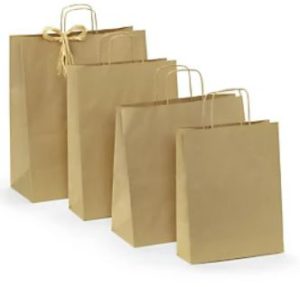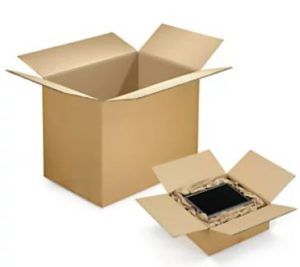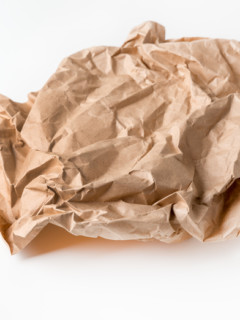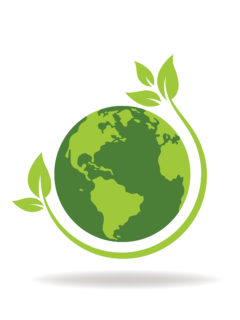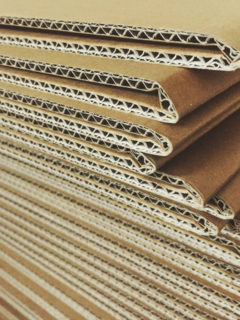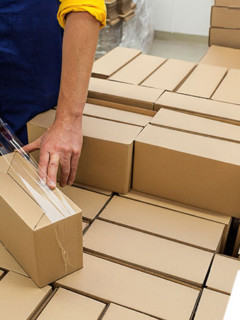Find out all about ecological packaging! ? April 22nd is celebrated as Earth Day. Gaylord Nelson created this day to raise awareness of the importance, for everyone, of preserving biodiversity and other environmental issues facing the Earth. At RAJA, we have a strong commitment to protecting the environment, so today we will answer your frequently asked questions about the impact of packaging on the environment.
But first, we must remind you that in order to protect nature in the best possible way, we should follow the 3 R’s rule, in the following order:
Reduce: You should use the minimum amount of packaging to ensure that the environmental impact is as minimal as possible, so avoid plastic in packaging. The aim is to replace this material with other environmentally-friendly products;
Reuse: Any product that is bought can have more than one life. For example: consider your customers’ returns by using return boxes to avoid having to use two packs if your customers want to return the products.
Recycle: once you don’t need the packaging, recycle it.
What is recycling?
Recycling is a procedure for treating industrial and household waste that allows the materials that make it up to be reintroduced into the cycle of a product.
Thus, there are 2 main ecological consequences:
- The reduction of the volume of waste and, therefore, of the contamination it would cause;
- The preservation of natural resources, since the recycled material is reused.
► How is it recycled?
Recycling paper and cardboard
Recycling paper and cardboard is generally more advantageous than incineration. A paper fibre can be recycled up to 10 times.
Recycling wood
Wood is recyclable par excellence. For example, wooden pallets can be repaired or converted into shavings for later use as paneling, garden sawdust or fuel.
Plastics recycling
Recyclable plastics are polypropylene (PP), polyester (PET), high density polyethylene (HDPE). Each ton of recycled plastic saves 700 kg to 800 kg of crude oil.
Steel recycling
This material is found in the manufacture of objects we use on a daily basis (packaging, cars, household appliances, furniture, among others).
For one ton of steel recycled, one ton of iron ore is saved. Aluminium is recycled easily and indefinitely. In other words: recycling aluminium saves natural resources. In this sense, the percentage of aluminium products that are recycled is 70-80% of aluminium products are recycled.
► Differences between ecological, Eco-Responsible, recycled, biodegradable and compostable
What is an ecological or Eco-Responsible product?
Ecology is a branch of biology that studies the relationship between living things and their environment. In short, an ecological or Eco-Responsible product is one whose production, acquisition and use do not affect the environment, that is, do not contaminate it.
Applied to packaging, any standard product has an ecological version. For example: avoid buying too many types of boxes and protection. At RAJA we have the Variabox, which adapts to what type of product. A tip: avoid plastics such as bubble wrap or adhesive tape with its paper version.

In our eco-friendly product range we have: recycled, recyclable, biodegradable and compostable products. We explain, their definitions below.
What is a recycled or recyclable product?
Recycled or recyclable products do not mean the same thing. Although both are considered ecological products, as they contribute to the preservation of the environment and have more than one use, they have differences:
A recycled product is a product that comes from recycling.
A recyclable product is a product that can be recycled.
What is a biodegradable product?
These are products that are broken down by a natural biological process (thanks to the action of micro-organisms).
For example, a biodegradable product is biodegradable bags, as they are made from cereal starch and are as strong as a standard bag. They therefore offer flexibility, impermeability and resistance due to their molecular structure.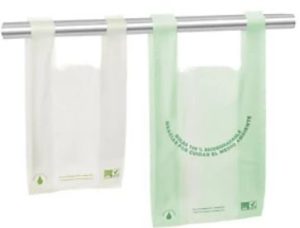
What is a compostable product?
Composting avoids expensive and polluting incineration and promotes the recycling of our waste. A compostable product is the best for the environment because when it decomposes it turns into organic compost.
Introducing Renature potting chips, made from corn starch.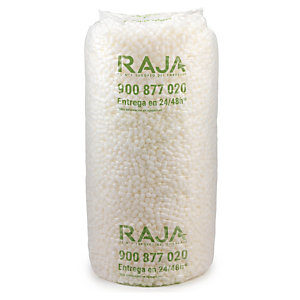
Why should you use eco-friendly packaging?
Because they help reduce waste, give the material a second life and therefore limit the use of virgin raw materials.
Furthermore, are you already familiar with the Women and Environment action programme? Every time you buy one of our selected eco-packages, RAJA will donate €1 per package to the RAJA-Danièle Marcovici Foundation.
► Does paper consumption destroy forests?
NO! The paper industry uses only by-products (based on wood chips and waste) or uses trees from sustainably managed forests.
Contrary to popular belief, the area covered by forests in Europe has increased by 25% in recent years.
Recycling symbols
Being able to identify eco-friendly packaging is possible through its labelling. This way, through various symbols we can detect whether a product is recyclable, what recycled material content it contains or where its raw materials come from.
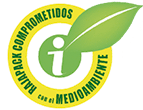
On our website, www.rajapack.pt, and in our catalogue you will find out whether a product is environmentally friendly thanks to this symbol.

This is certainly one of the most common symbols on packaging. That way, the number indicates the percentage of recycled material in the product. Thus, this symbol was designed in the late 1970s by American Gary Anderson and is now used all over the world as a recycling symbol.
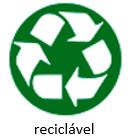
So if you want to know if you’re dealing with a fully recyclable product, look for this symbol. This is the case, for example, with our ecologically responsible packaging.
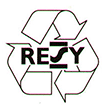
Just as an example, do you often see the RESY symbol? This symbol is granted by the RESY Organisation for the Regulation and Evaluation of Materials. Please note that the number under the arrows indicates the company number.
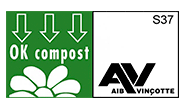
100 biodegradable products that break down completely without harmful effects.

PEFC is a symbol granted by the Programme for the Endorsement of Forest Certification. Thus, its objective is to promote sustainable forestry, highlighting products from renewable materials, made from wood obtained from a sustainable forest.
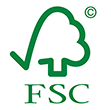
The Forest Stewardship Council or FSC is an organisation that ensures that the world’s forests are managed responsibly. Thus, paper and wood with this symbol means that they respect the FSC standards.
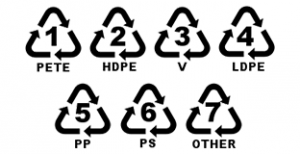
In summary, the pictograms help to identify the selection and recycling of plastic. PET (PETE): polyethylene terephthalate. PE-HD (HDPE): high density polyethylene: translucent appearance. PVC (V): polyvinyl chloride: crystalline aspect. PE-LD (LDPE): low density polyethylene: transparent aspect. PP: polypropylene: partially crystalline aspect. PS: crystal polystyrene: transparent aspect.

This symbol identifies electrical and electronic products that are required to be separated for proper recycling.
If you need advice, about packaging or even recycling symbols, please contact our experts on 707 788 008 or contacto@rajapack.pt. They will be happy to help you choose which solutions best suit your business.











